Here is the Volume 4 of Judo from When you watch something, visit us first! Mr. Toshihiko YAMADA, Director and General Manager of the Ryotokuji University Staff Judo Team (SBC Shonan Beauty Clinic Judo Team at present) told us about the point to enjoy Judo more, and the great matches by Judo Legends. This is the complete version of Part 8&9 on our YouTube channel.
From Vol. 1 through 3, we learned how Judo-ka’s tactics are done.
Mr. Toshihiko YAMADA, Director and General Manager of the Ryotokuji University Staff Judo Team (SBC Shonan Beauty Clinic Judo Team at present), told us again about the tips for watching Judo.
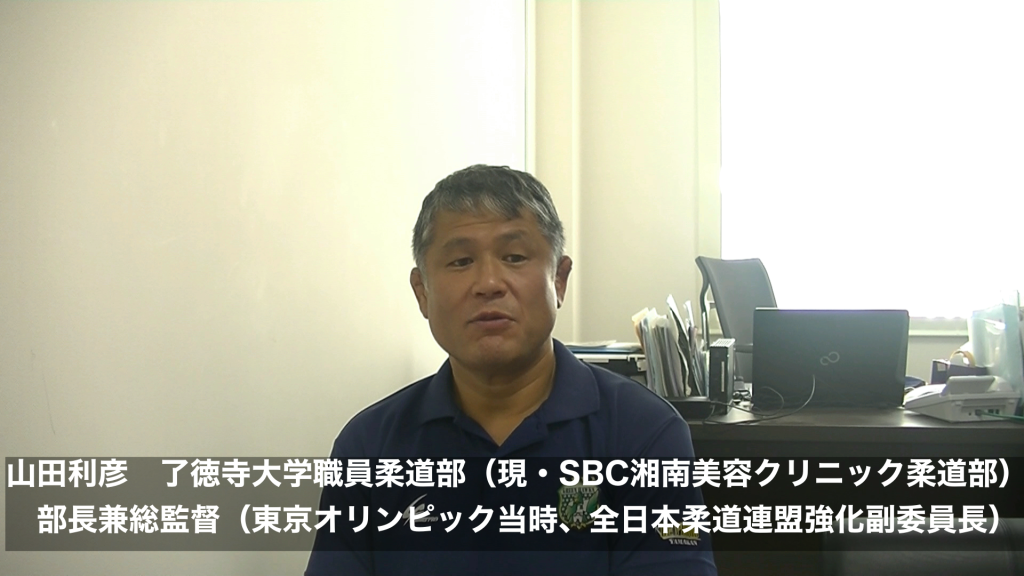
Part8:To enjoy Judo more, focus on these points as well!
What happens when top Judo-ka fight each other
Q: When top Judo-ka (athletes) fight each other, they seem to think about what they can do to prevent from being applied their opponent’s Waza (techniques)?
Top Judo-ka, through their experience in matches and practice, are familiar with their opponents’ specialties.
Therefore, for example, as former Japan national team head coach, Master Kosei INOUE used to be good at Uchimata when he was an active Judo-ka, if Master INOUE takes his Hikite, (Pulling hand) in Kenka-yotsu (asymmetrical stance) , he will be subjected to a strong Uchimata, so it is important how not to let Master INOUE take his Hikite or how to have a better Hikite himself than Master INOUE. In the match between Master INOUE and Master Keiji SUZUKI, the current Japan national team head coach, the two were rivals and in Kenka-yotsu, and their control of Kumite (how to grip) was a highlight.
If you are aware of such points before watching a match, you will be able to understand such things as “He just grips a good point” in Kumite Arasoi (gripping fight), and you will be able to enjoy Judo more.
Q:So when Master INOUE holds Hikite, it makes him able to move his opponent’s center of gravity?
Yes. Uchimata is Waza to pull the opponent, so if he grips a good point, he will pull away.
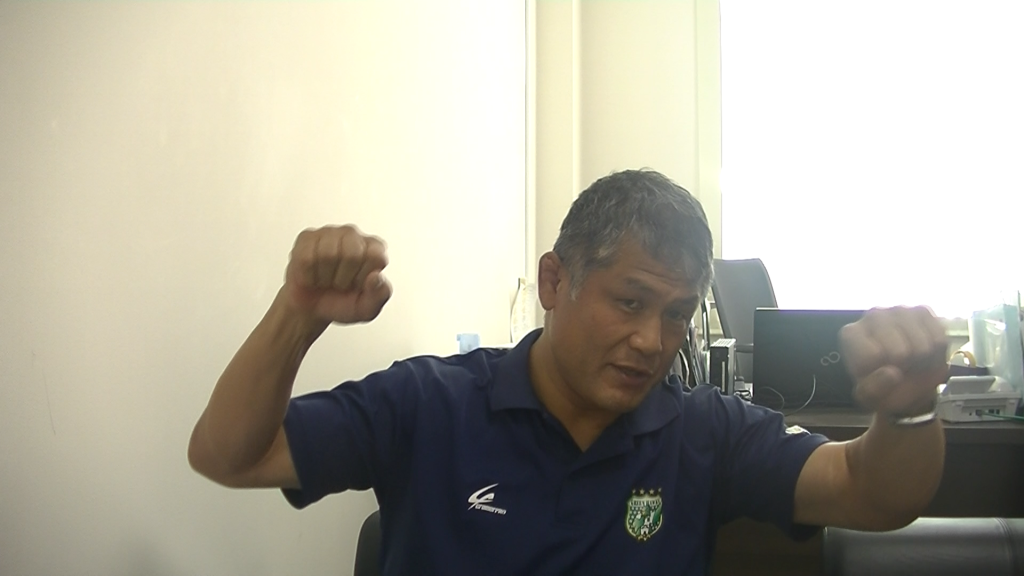
Of course, the opponent tries to resist by twisting his body, but Master INOUE’s pull is so strong that he cannot resist, or, it makes Master INOUE possible by gripping a good point that he may break down the opponent with Ouchi-gari or other Waza instead of going into Uchimata directly, and to launch into a series of Waza.
From Master SUZUKI and other opponents’ side, even Master INOUE cannot pull freely if his right side is pulled back.Then, if Master INOUE tries to move, he will have to be careful against Master SUZUKI’s good Ashi Waza (foot techniques) and will not be able to move freely.
Once you understand such tactics, when you watch Judo, you will be able to see the mutual attack and defense that precedes Waza, rather than simply “he threw” or “Waza applied”.
Q:Is such linkage from Ouchi-gari to the Uchimata that you talked about before, where he moved the center of gravity backward and then applied Waza to knock down forward?
Yes. As top Judo-ka’s each Waza is so powerful, their opponent reacts by twisting his body or pulling back, but they make their opponent do so intentionally and they apply Waza.

If it is very fast, the opponent cannot react. Such tactic is done each other. However, it is only when they grip a good Kumite that they can also convey pressure and feint movements to their opponent.
If this is the case, Waza will not work and the opponent’s ballance will not be broken down, so it is important to grip a good point in Kumite Arasoi.
Q:You mentioned that even if the opponent gripped Kumite, Judo-ka would squeeze each other’s Sode (sleeves) so that the opponent’s power would not be directly transmitted to you?
Yes. In a match where there is a difference in ability, the situation would be just gripped and moved, but usually Judo-ka rewinds the arm or grip a good Kumite by themselves. Or, when they usually grip Eri (collar) and Sode, they may change it by gripping Eri with both hands.
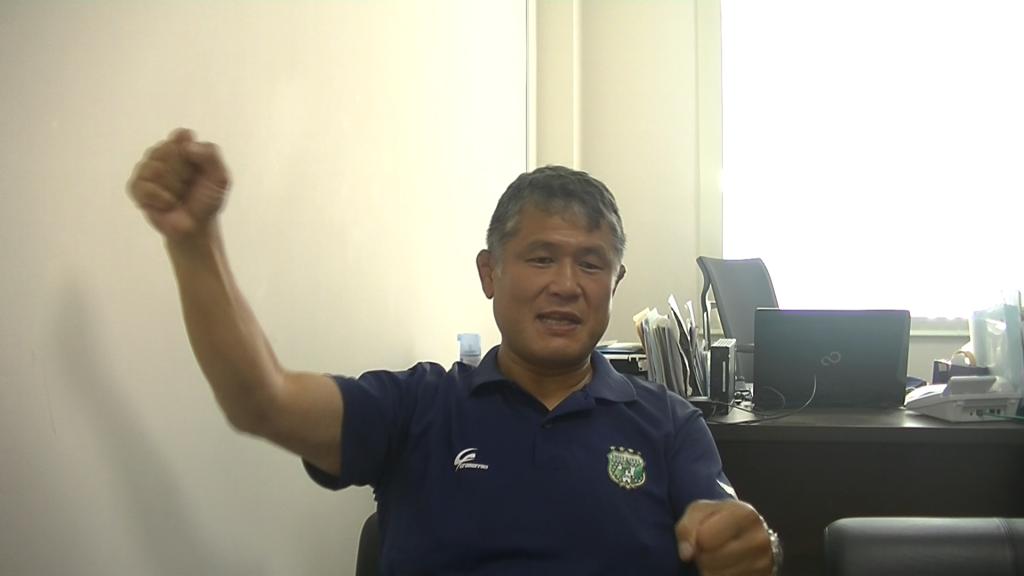
Many foreign Judo-ka do not want to be made spacing by a good use of Tsurite (Lifting hand), so they pull their opponent in tightly to prevent such a move.
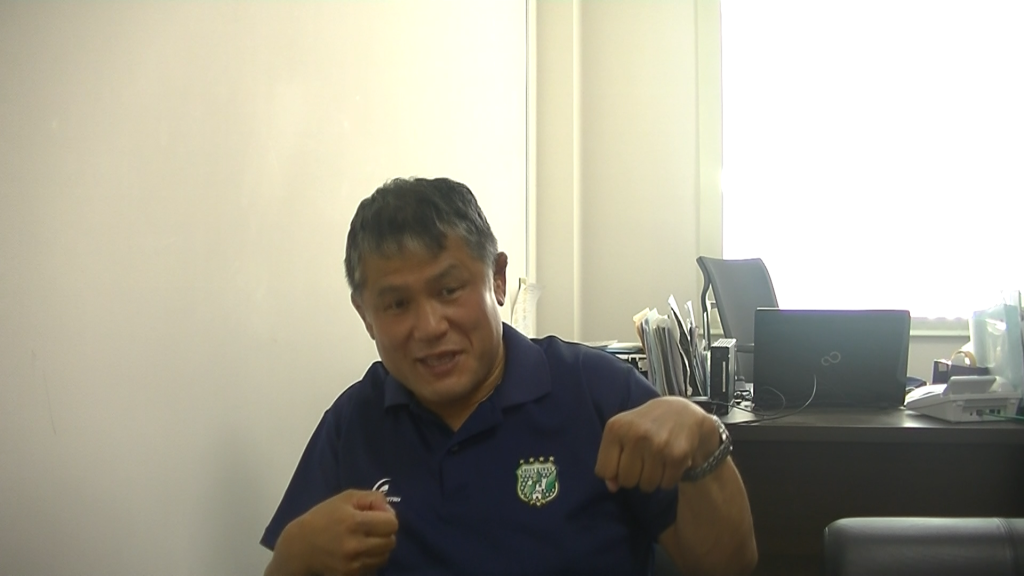
Many foreign Judo-ka are strong, so they use a close contact strategy. In order to counter this strategy, Japanese Judo-ka often try to grip a good Tsurite and to make spacing, with using their opposite hand to prevent the opponent from pulling their Tsurite in, which is often seen in international tournaments.
Q:Do they strategically continue to apply certain Waza and then apply another hidden Waza?
Yes, they often do so.
Especially in the case of matches between Judo-ka that know each other, for example, Mr. ABE and Mr. MARUYAMA, who had competed each other to the very end for the representative for Tokyo Olympics in -66kg class, had already matched so many times and were familiar with each other’s moves, so they had to decide how to prepare for the selection match, either to strengthen their existing Waza or to acquire new Waza to make the opponent feel the difference from before.
However, since that match was held between top-level Judo-ka, there was a risk of being returned if one applied Waza that he had mastered imperfectly.
Mr. ABE’s strength is that he keeps moving forward and continuing to apply his Waza first, while Mr. MARUYAMA’s is that he wants to keep spacing and enter to apply Tomoe-nage or Uchimata. Most matches in which Mr. ABE lost to Mr. MARUYAMA in the past were long, so that his pressure weakened and Mr. MARUYAMA was able to apply Sutemi Waza (sacrifice techniques) like Tomoe-nage to him.
In that match, however, Mr. ABE was more determined to keep coming forward and applying his Waza, and although he did not come up with any new Waza, he showed what he had at the time.
Q:You mentioned that Mr. Shohei OHNO also applied Waza in the other direction at the very last of the final match of the Tokyo 2020 Games?
Judo-ka from all over the world know the power of Mr. OHNO’s Uchimata and Osoto-gari.
At that time, they were in Ai-yotsu (Symmetrical stance), so he could have applied Uchimata, but it had been studied by the opponent, and in Golden Score, when both Judo-ka were tired, Mr. OHNO was applying Osoto-gari several times. There were some Osoto-gari that were executed at the proper time, but those were not sufficient, but they imprinted themselves in the opponent’s mind, and when the opponent twisted and dodged, he finally applied contrasting Sasae-tsurikomi-ashi.
That was truly an example of how effective it is to have contrasting Waza.
How Japanese Judo-ka should match with foreign Judo-ka?
Q:In international competitions, the power relationship differs by each class, does the plan for the match change accordingly?
Overall, it must be said that the heavyweight classes are tough. There are many foreign Judo-ka with their superior physical ability, strength and agile in the -100kg and +100kg weight classes, even in the 2m height like a famous French Judo-ka, Mr. Teddy RINER. Therefore, it is necessary for Japanese Judo-ka sometimes to endure against them.
For example, Mr. WOLF (Aaron) is as quick and strong as foreign Judo-ka, but he shows his strength when his opponents get tired after a long period of match, which is commonly called “WOLF time.” Mr. WOLF won the gold medal by scoring points in all of his matches at Tokyo 2020, but he endured when he should have endured.
And in the quarterfinal and semifinal against strong opponents, he got chances and won with points with his Waza, and in the final, he faced an opponent he lost to at the World Championships in 2019, and this Korean Judo-ka also has a lot of stamina, but in this match, after much patience, Mr. WOLF was able to outperform him with his stamina and to apply his Waza finally.
Talking about the lightweight classes, the opponents are strong as well, but the difference in physical strength is not as large as in the heavyweight classes.
For example, Mr. (Shohei) OHNO is as strong as any foreign Judo-ka, and it is wonderful that once he grips his opponent, he is not easily cut off.
Q:Is there a strategy with using “Shido?”
When some Judo-ka notice that it would be difficult to apply Waza to their opponent upon grappling, they would sometimes prefer to change their strategy to continue to attack and to be well over with the number of Waza to their opponent because Shido may be called to the opponent.
Also, when the difference in ability is obvious before the match and there would be no chance to win by fighting properly, Judo-ka may try to win by eliminating the good points of the opponent.
How to enjoy domestic Judo competitions in Japan
Q:Are there any way to enjoy domestic team competitions, different from those for international competitions?
Yes, there are. In particular, the university team competition is more exciting than anything else for those involved. Therefore, each university is making their best effort to win the title.
Q:Could you tell us about the unique and interesting aspects of team competition?
Sure. First of all, the men’s university team competition is held in open weight class. Therefore, they can pick up the seven strongest students Judo-ka from their own university and line up them in the order they wish.
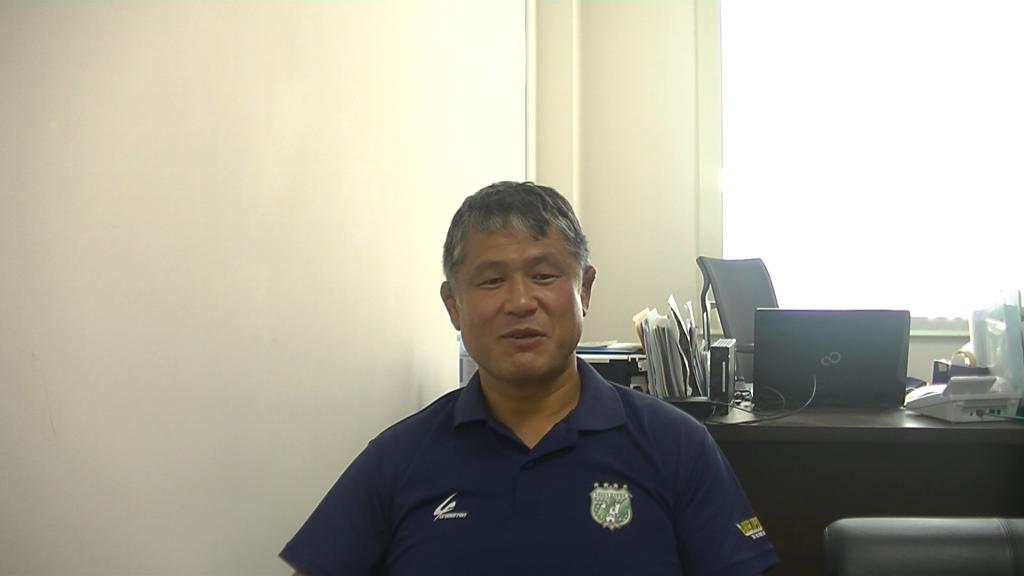
Therefore, the Ace Judo-ka from each university, such as in the recent (*June, 2022) University Championship final, Mr. Tatsuru SAITO from Kokushikan University who is the All Japan champion this year (at shooting) as well as Mr. Sanshiro MURAO from Tokai University, the -90kg champion (at shooting), are naturally the point getters, and the focus for the opponents will be how to stop these Ace Judo-ka.
Furthermore, unlike international competitions, there are draws in domestic team competitions. Since it is difficult for all seven Judo-ka to win, it is important how to bring a draw against the Ace Judo-ka and how to take the points that can be taken. This is one of the most interesting aspects of a draw.
Even if some student Judo-ka are not competitive in the individual competition, they will lose only when they are given 3 Shido, but it will be judged as a draw though they have up to 2 Shido in the university team competition, therefore when the order of student Judo-ka is announced, which changes from match to match, it is interesting to look at the each individual match up.
Even if both teams have a difference in overall ability, there will surely be a chance because Judo-ka have their likes and dislikes. Of course, all of them are not Ace Judo-ka, so it is also interesting to see if there would be Judo-ka who can stop those Aces, or if there are matches between such Ace Judo-ka.
Q:All Japan Judo Championships is also held in open weight class, and even if some Judo-ka are strong in their own weight class, there would be some difficulties when they compete against heavyweights, right?
Yes, that is correct. Some Judo-ka are strong against bigger Judo-ka, but sometimes not so much against lighter ones.
For example, Mr. (Kokoro) KAGEURA is good at Katsugi Waza (carrying throw) himself, so he is good at competing with big Judo-ka, but he often could not grip a good Kumite against the movable Judo-ka who are good at Seoi-nage in his own class, therefore, he had hard times during past All Japan Judo Championships, however, he promoted to the final in 2022 at last. As such, there are many different types of Judo-ka, and it is interesting to see each individual matchings in the open weight class.
Part9:What’s great about Legend – 8 great matches selected by Mr. YAMADA –
All Japan Judo Championship Final in 1978: Yasuhiro YAMASHITA vs. Chonosuke TAKAGI
I would like to pick up a match that took place a while ago, involving the current president of the All Japan Judo Federation (at shooting), Master Yasuhiro YAMASHITA. He won the final against Master (Chonosuke) TAKAGI by Osoto-gari at All Japan Judo Championships.
It looks like an easy throw and although Osoto-gari may give the image of “reaping with the leg,” it is common knowledge among Judo-ka (athletes) that to break the opponent’s upper body down is important. This match shows that very well.
All Japan Judo Championship Final in 1980 & 1981: Yasuhiro YAMASHITA vs. Sumio ENDO
And regarding Ne Waza (ground techniques).
Master YAMASHITA has received accolades such as “9 consecutive Victories at All Japan Judo Championships” and “203 consecutive wins,”and one of the factors that helped him achieve these is his great skill in Ne Waza. I heard an anecdote that when Master YAMASHITA’s opponent put his hand on Tatami (mat), a loud sigh was heard from the audience in the packed Nippon Budokan, saying “The game is decided.”
But they were not bad at Ne Waza at all, but even against such opponents, as his opponents were excellent Judo-ka who competed in the All Japan Judo Championships. But Master YAMASHITA had the ability to strangle or hold them down with ease.
Q: Which matches do you recommend to see the greatness of Master YAMASHITA’s Ne Waza?
It is the final match of All Japan Judo Championships with Master (Sumio) ENDO. Master ENDO was a Judo-ka with agility and power, and was described as “having a different sound” when he threw than other Judo-ka.
Such Master ENDO was held down when he spun to escape from about to be strangled.
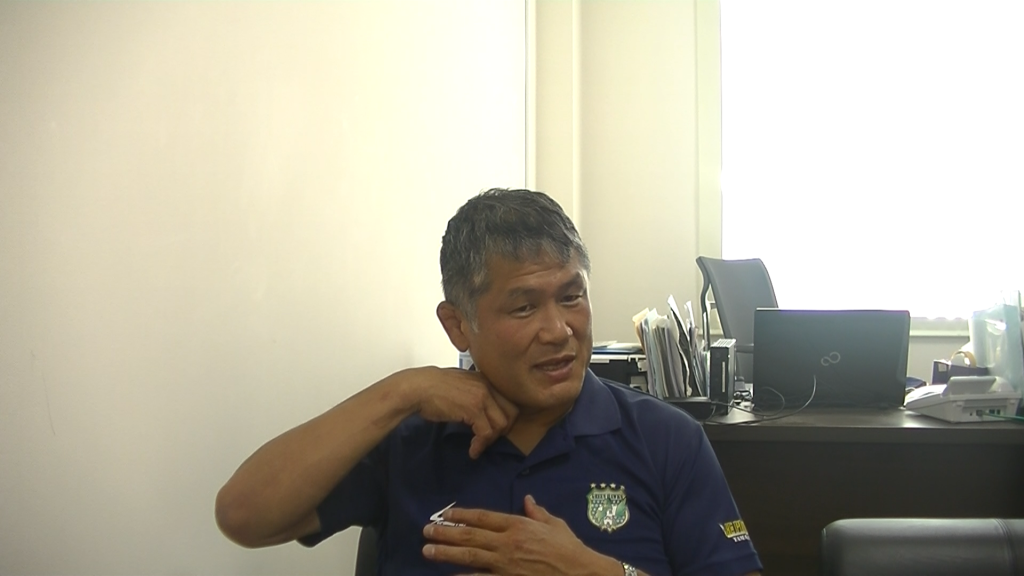
Watching it, it was an easy match, as if it were the first or second round, but I think it was Master YAMASHITA’s ability that made even such excellent Judo-ka being lost by him.
All Japan Judo Championship 3rd Round in 1976: Yasuhiro YAMASHITA vs. Haruki UEMURA
Also, in terms of “hiding Waza” which I mentioned earlier, it has become difficult to hide everything than ever because of the experience gained at training camps and in Degeiko (Training at other team), etc. However, Master Haruki UEMURA, the current President of Kodokan, hid a new Waza of Kouchi-makikomi to counter Master YAMASHITA and won this match in the All Japan Judo Championships.
Q:Was Master YAMASHITA great not only in Ne Waza but also in Kumite (how to grip)?
Master Shozo FUJII, nicknamed as ”Artist on Tatami” who won 4 consecutive World Judo Championships, said “YAMASHITA’s Kumite was superb.” Also, Master Jun KONNO, the chairman of the National Team Commission of All Japan Judo Federation said, “I was relieved not to be in the same era with Master YAMASHITA.”
Perhaps he thought of Judo as Tume-shogi (chess problem), where he had no unguarded point and he was great both standing and ground.
All Japan Judo Championship Final in 1990: Naoya OGAWA vs. Toshihiko KOGA
In the best part of the open weight class, the All Japan Judo Championship final between Master Naoya OGAWA and Master Toshihiko KOGA, who won the World Judo Championships in their respective weight classes. Master OGAWA eventually won, but it was a match unique to the open weight class.
Also, it was interesting to see how Master KOGA promoted to final, because it would be his disadvantage when he grappled each other with his opponent as he is a lightweight Judo-ka, therefore he did not let his opponent grip through fantastic Kumite Arasoi (gripping fight) and it was so exciting.
Q:When Master KOGA promoted to the final, did he not allow his opponent to grip?
Well, Master KOGA was very skilled at controlling Kumite and getting a good Kumite for himself. Unlike normal Kumite, Master KOGA would hold the opponent’s Eri (collar) with his Hikite and not allow the opponent to hold the opposite side, and then he would apply Seoi-nage or Sode-tsurikomi-goshi and in later years, Koshiguruma.
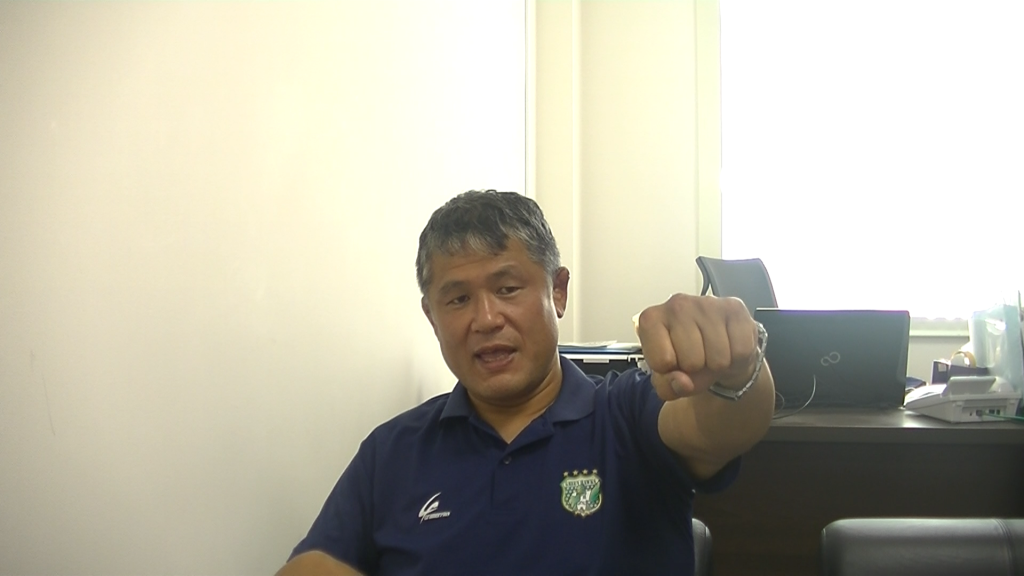
He also had Ippon-seoi-nage and Kouchi-makikomi as contrasting Waza. He was very fast in applying Waza, and would come in when his opponent could not grip him, so even if he was facing a big Judo-ka, he would attack first without letting his oppoent grapple at all.
Unlike today, where you need to either throw or 3 Shido to the opponent, there was a judge using flag, which was a following wind to Master KOGA.
Also, nowadays, Judo-ka who win the Olympics or World Championships are exempted from the qualifying round and can participate in the All Japan Judo Championships, but this was not the case at that time, so he had to pass the qualifying round through, therefore he had to win Judo-ka in so various type, including tricky ones, and he beat such Judo-ka and it is fabulous for him to promoted final in the end, while there are many examples of strong Judo-ka who failed to qualify for the All Japan Judo Championships.
Q:If he did not let the opponent grip, the power of the opponent did not convey to Master KOGA, right?
Yes, and I think he was very thorough in creating his own offensive form first.
Q:Are there any current Judo-ka who are similar to Master KOGA, quick to get into the Waza?
Mr. Hifumi ABE and his sister, Ms. Uta ABE have agility, and they are quick to enter into Waza upon gripping, such as the Sode-tsurikomi-goshi with both Sode (sleeves), which is synonym of them.
When he first began to distinguish himself, winning high school tournaments was a matter of course, and his opponents could do nothing. In the semi-finals and finals of high school tournaments, he faced reasonably strong opponents, but he threw the opponents and won quite easily.
Even at his first World Championships held in Hungary in 2017, his opponents were at their wit’s end. The opponents also study him, of course, therefore Kumite Arasoi is fundamental and important.
All Japan Judo Championship Final in 2003: Kosei INOUE vs. Keiji SUZUKI
Another match is between Master Kosei INOUE and Master Keiji SUZUKI that I talked about a little earlier, you can watch the video with their explanation on “Zenjuren.tv”.
During this match, Master INOUE broke through the situation of even in a moment. Master SUZUKI was good at Uke (blocking) and he twisting his body to block Uchimata of Master INOUE, but Master INOUE just threw from such position. We were also impressed by this match.
All Japan Judo Championship 3rd Round in 2019: Hirotaka KATO vs. Tatsuru SAITO
All Japan Judo Championship 3rd Round in 2020: Hirotaka KATO vs. Takeshi SASAKI
Regarding fantastic Ne waza, I would pick up the match between Mr. Hirotaka KATO (-90kg class) and the current All Japan Judo champion (at shooting), Mr. Tatsuru SAITO (+100kg class). The weight difference was nearly double, about 90kg versus 160kg, but lighter Mr. KATO was able to hold his opponent down.
However, the following year, Mr. KATO was held down by Mr. (Takeshi) SASAKI (-81kg class) and lost. It was a very interesting match between two Ne Waza experts.
Share this content:
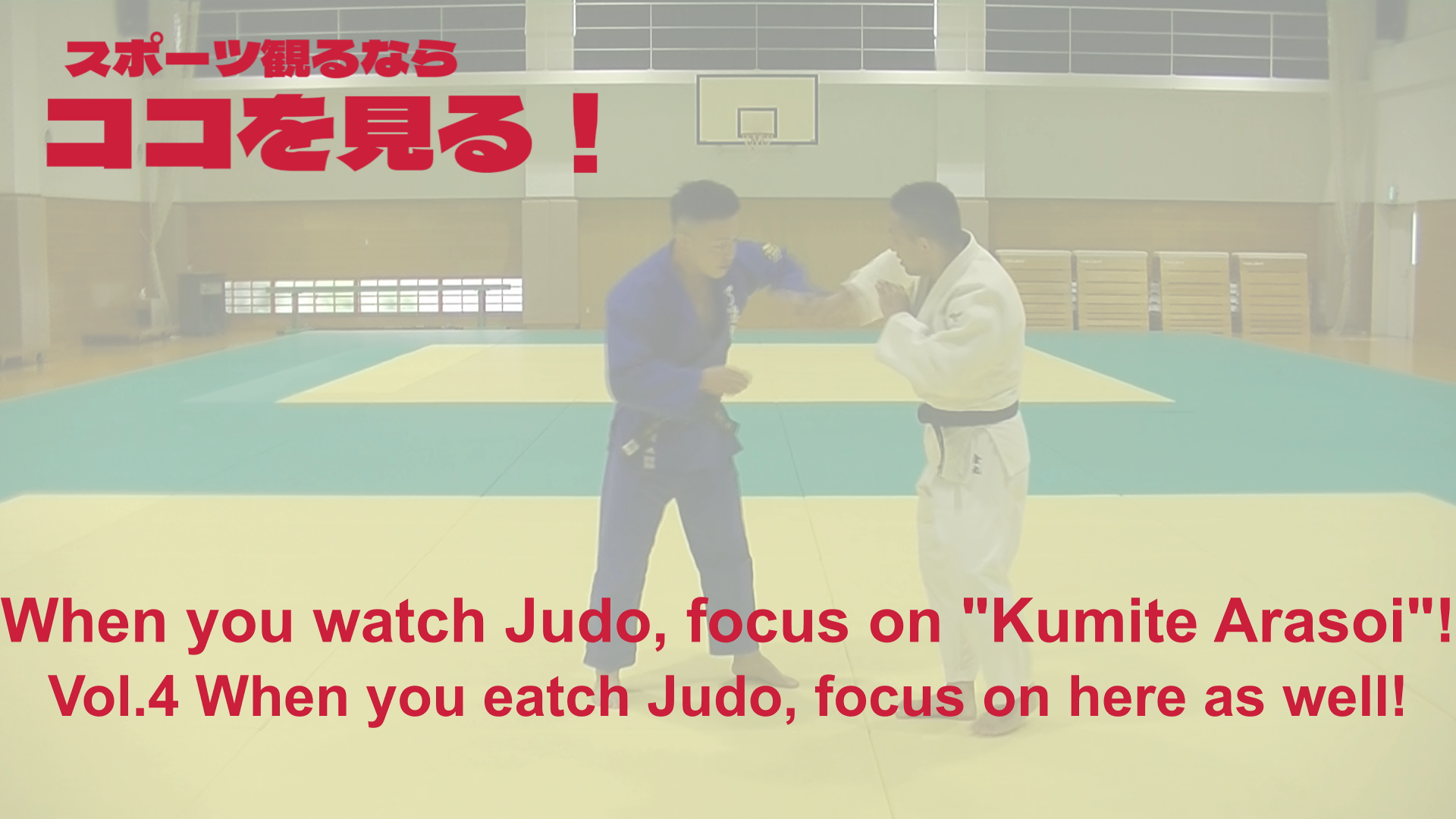
コメントを残す